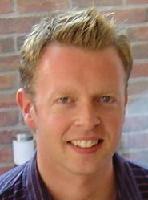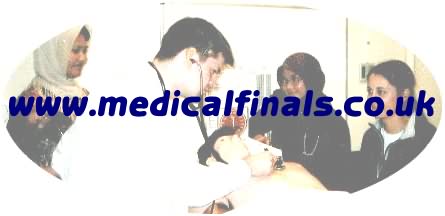When I'm Big I Wanna Be ....

PROFILE: Dr Gary Meenagh.
1. What's great about being a rheumatologist?
Rheumatology is one of the few areas of medicine which combines the following elements:
- Working within a truly multi-disciplinary team
- Building strong professional relationship with patients with chronic illness
- Maintaining an excellent work/life balance almost unheard of in other specialities
- Increasing use of pharmaceuticals at the cutting edge of medicine
- Ability to develop new practical skills eg. musculoskeletal ultrasound
2. What are the positive and negative aspects of the job?
Positives:
- Excellent working hours with very infrequent on-call commitments
- Diversity of conditions treated ranging from muscle, bone, metabolic and connective tissue diseases
- Very active research area with burgeoning evidence base
- Well sponsored opportunities for attending international educational meetings
Negatives:
- Increasingly popular as a specialty, therefore competition for jobs is strong
- Some regions of the UK are over-subscribed with trainees, making permanent consultant posts for everyone unlikely in those regions
- Funding for post-graduate degrees (MD, PhD) is declining and creating a differential between those trainees with and those without
- Working within the constraints of NICE guidance, particularly for new technologies/pharmaceuticals eg. Biological therapies.
3. What would be a typical day at work for you?
| 9.00 am - 12.30 pm | - Out-patient clinic (approximately 2 new patients and 8 review patients per clinic) |
| 12.30 pm – 1.45 pm | - Lunch |
| 1.45 pm – 2.45 pm | - Meeting with Nurse Specialists to discuss patient queries from Patient Advice Line |
| 2.45 pm – 3.45 pm | - Reporting DEXA scan results (Osteoporosis) |
| 3.45 pm – 5.00 pm | - Patient administration (signing blood results, dictating results letters, answering GP queries) |
4. Do you have an area of specialist interest?
My own area of sub-specialisation is the performance of musculoskeletal ultrasound. This is a relatively new discipline in the hands of rheumatologists, but one which is rapidly becoming more popular. I was fortunate enough to study this at the European centre of excellence in central Italy on a 6 month sabbatical during my SpR training.
I now employ scanning as a routine part of my clinical examination of patients. It is particularly useful for diagnosing early inflammatory disease (joint and soft tissues) when other imaging techniques are often unremarkable. It is also invaluable at charting damage to tissues (erosions to bone) and in the monitoring process of patients on disease modifying drugs. In addition, ultrasound allows me to ensure correct placement of a needle into areas traditionally inaccessible to blinded injection eg. the hip joint or the synovial sheath surrounding inflamed tendons etc.
5. How do you become a rheumatologist, and any tips to get onto the ladder for an aspiring foundation year doctor?
There is a defined curriculum for junior doctors entering a rheumatology clerkship at ST1 level. Generally most posts will encourage both Rheumatology and General Internal Medicine, although this is increasingly changing towards single accredited posts with solely rheumatology.
I would suggest that if F1 & F2 doctors are keen and are fortunate enough to find themselves in rheumatology posts, that they make their interest known to the consultant staff. This is likely to be important when it comes to entering ST posts. In addition I would suggest trying to write up an interesting case report or perhaps performing a short chart-based audit. Padding your CV with things rheumatology-related is likely to be very useful in the future.
www.MedicalFinals.co.uk

